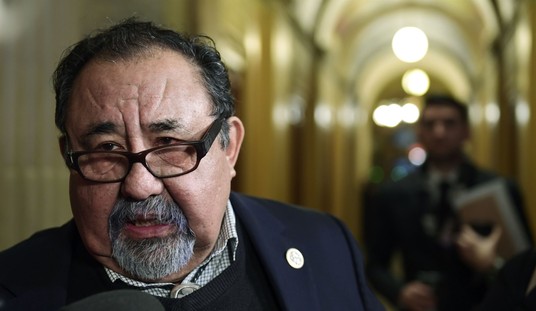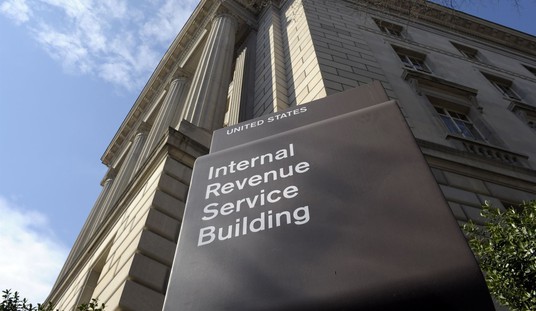“The whole aim of practical politics,” Mencken said, “is to keep the populace alarmed (and hence clamorous to be led to safety) by menacing it with an endless series of hobgoblins, all of them imaginary.”
Richard Lindzen, one of the world’s foremost climate scientists, reminded me of Mencken’s saying when I sent him a transcript of Clinton’s panicky speech about climate change at a rally at Miami-Dade College in Miami, FL, October 11.
“Climate change is real, it’s urgent, and America can take the lead in the world in addressing it,” she told her mostly young audience.
Well, now, yes, climate change is real. It’s been real throughout geologic history. But for it to be urgent, it must now be something quite different from what it’s been before.
Clinton thinks it is. That’s why she said that over the last thirty years “the climate challenge has only grown more stark.” Has it?
Clinton called Al Gore, who spoke at her rally and in 2008 and again in 2009 falsely predicted that in five yearsthe North Pole would be ice free, “one of the world’s foremost leaders on climate change.” She recommended his movie An Inconvenient Truth despite its many scientific errors. Yet she ridiculed her opponent as “a guy who denies science” because he denies not climate change per se but manmade climate change dangerous enough to warrant spending $Trillions to fight it.
She might want to learn just a little bit of climate science herself—the bit about temperature trends.
Has the world warmed in the last 150 years? Yes, by perhaps 0.8–1.0°C.
Does that prove that human activity—CO2 and other “greenhouse gas” emissions—caused the warming? No. Why not?
Recommended
First, because the first hundred years of that warming occurred before CO2 levels rose enough to blame.
Second, because even by the data preferred by the U.N. Intergovernmental Panel on Climate Change (IPCC) the warming was intermittent, and two periods (1860–1880 and 1910–1940) during the first hundred years were every bit as rapid as the one period (1980–2005) in the last fifty years, as shown in this graph exposing the statistical deceptions of the IPCC. (The IPCC provided the red, purple, and orange trend lines to depict accelerating warming periods; the yellow lines show that the warming occurred at the same rate in three periods.)
Third, because once you’ve applied the proper statistical tools to control for the normal fluctuations of a coupled non-linear chaotic fluid-dynamic system (which is what Earth’s climate is) to global temperature data since 1958 (about the beginning of the period during which climate alarmists claim manmade CO2 emissions began forcing global warming), you find that there was no upward trend from 1958 to 1977 and none again from 1977 to 2012. The entire global temperature change in that period occurred in a single step, in late 1977, driven not by CO2 but by the reversal of the Pacific Decadal Oscillation from negative (cooling Earth’s atmosphere) to positive (warming it).
Fourth, because aside from a temporary upward blip (1998) making it fractions of a degree warmer than the surrounding decades and driven by an unusually strong El Niño (which warms the atmosphere and is usually followed by a cooling La Niña), there was no statistically significant trend in global average temperature from early 1997 to late 2015, despite the fact that atmospheric CO2 concentration rose even faster than the alarmists had predicted. (The warmth of 2016 that alarmists so celebrate is analogous to that of 1998—driven by El Niño, not CO2.)
And is that warming—whether over the last 150 or just the last 60 years—dangerous, warranting Clinton’s calling it “urgent”? No. Why not?
First, because most of it was just lifting us out of the Little Ice Age, delivering us from the ravages of a colder climate that led to widespread crop failures, famines, and plagues.
Second, because a change of global average temperature of about 1°C, or even two or three times that, is simply innocuous. Most locations around the world experience ten to thirty times that much warming between 2 a.m. and 2 p.m. every day, and twenty to eighty times that much between mid-summer and mid-winter every year. The proper response to 1°C of warming is, as Lindzen puts it, “So what?”
There’s another little bit of climate science about which Secretary Clinton might want to learn—the bit about the difference between model predictions and real-world observations.
Keep in mind that Nobel Prize-winning physicist Richard Feynman said the “key to science” is that if real-world observations contradict your theory, your theory’s wrong—regardless how smart you are, how beautiful your theory is—or (I’m sure he’d have agreed) how many people agree with you.
What Clinton and all the other climate alarmists depend on for their fear mongering is the output of computer climate models. Those models are amazing feats of mathematical and scientific creativity, and I stand in awe at the brilliance of those capable of designing them. But they mustn’t be mistaken for evidence. They are theory. The numbers they spew out aren’t real-world observations, they’re what we expect to observe if our theory about climate is true. As such, they must be tested. Their output must be compared with real-world observations.
How do they fare? Not well.
First, on average, as University of Alabama climatologist Dr. John Christy testified before Congress earlier this year, illustrating the point with this graph, they predict two to three times the warming actually observed by our two most reliable (because least contaminated and most comprehensive) global temperature monitoring systems—satellites and weather balloons—over the relevant period.
Second, as climatologist Dr. Roy Spencer, U.S. science team leader for NASA’s satellite program to monitor global temperatures, showed, over 95 percent predict more warming than observed. If their errors were random, they’d be as frequently below as above observations. That they’re not implies that the errors are driven by bias—whether honest mistakes, or dishonest deceptions—shared by pretty much all the models.
Third, none of them predicted the complete absence of statistically significant warming from early 1997 to late 2015—eighteen years and nine months, about 25 percent longer than climate alarmist Phil Jones, director of the University of East Anglia’s Climatic Research Center, said could be reconciled with the models.
In short, real-world observation contradicts model output. According to Feynman’s “key to science,” that means the models—and the theory on which they’re based—are wrong. They therefore provide no rational basis for any predictions about global temperature.
And that means they provide no rational basis for any policy—
- Not for Clinton’s intent to install 500 million solar panels across America by the end of her first term,costing a mere $205 billion, not to mention the blight on the landscape that no self-respecting environmentalist should welcome.
- Not for the Paris Climate Agreement, about which Clinton said, “I am not exaggerating when I say it is our last best chance to solve the global climate crisis,” which would cost between $1 Trillion and $2 Trillion every year from 2030 to 2100 and achieve no more than 0.17°C reduction in global temperature—too little to have any significant impact on human or ecological welfare.
- And not for Clinton’s plan to spend hundreds of $Billions more “to accelerate the transition to a clean-energy economy, and create high-paying jobs, building and installing more solar panels and wind turbines, modernizing our electric grid, retrofitting buildings, building resilient twenty-first century infrastructure.”
What Clinton wants the United States and the world to do to fight global warming would, as climatologist Dr. David Legates and energy economist Dr. G. Cornelis van Kooten showed in a paper published by The Cornwall Alliance for the Stewardship of Creation, slow, stop, or reverse economic growth everywhere, delaying the climb out of extreme poverty and the high rates of disease and premature death that invariably accompany it.
Who’s really ignoring climate science? Not those who deny but those who, like Clinton, assert manmade warming so dangerous as to warrant spending $Trillions to fight it—$Trillions that could instead go to providing abundant, affordable, reliable energy from fossil fuels to the 3 billion or so people in the world who still lack it but need it to overcome poverty.

























Join the conversation as a VIP Member